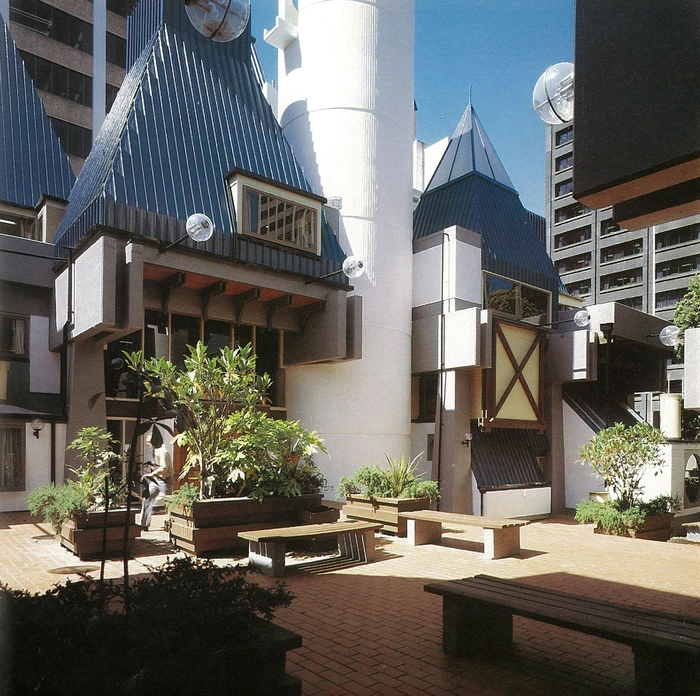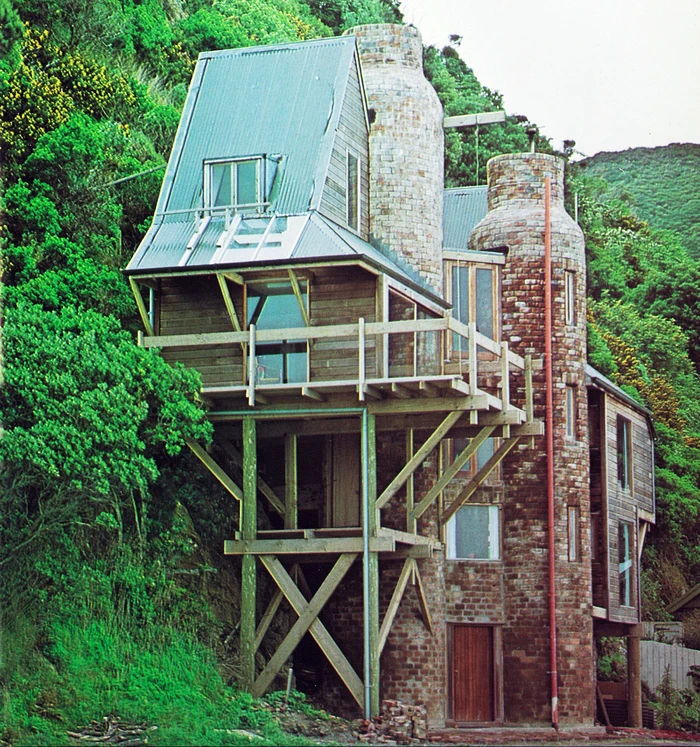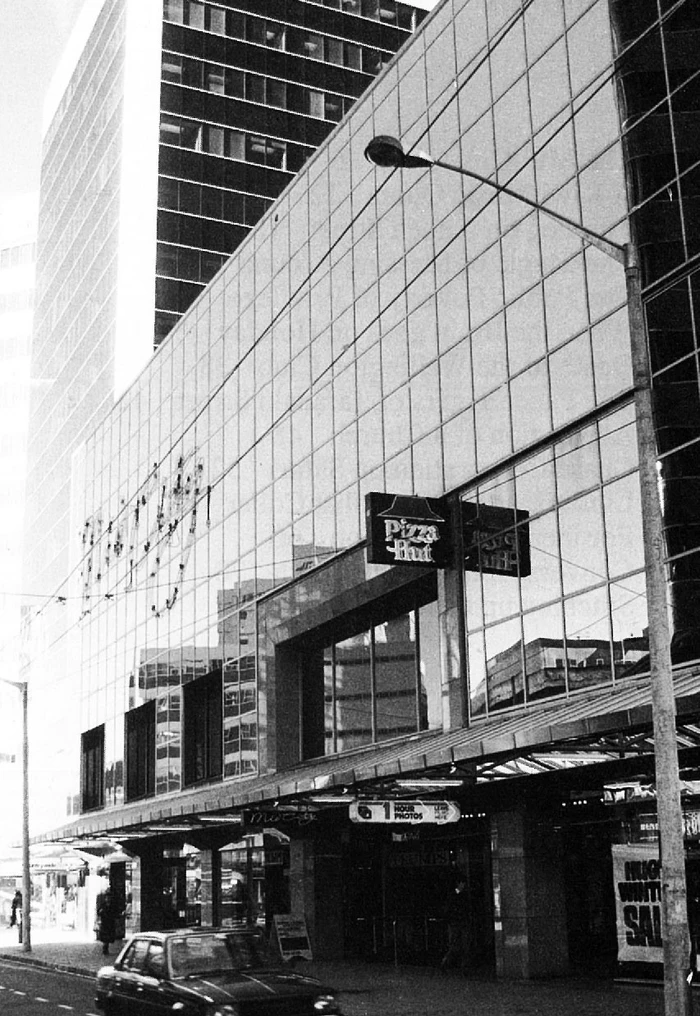The Rise of Vernacular Architecture in Wellington
The 1960s and 1970s saw the rise of a unique style of New Zealand architecture. Two of the best known exponents of this new form were the Wellington based architects, Roger Walker and Ian Athfield.


The Wellington Club, 88 The Terrace. Designed by Roger Walker c. 1971, demolished 1986.
The ‘Enfants Terribles’ of Wellington architecture, Roger Walker and Ian Athfield shook up the scene like few had done before them and in the 1970s were among the first New Zealand architects to become household names. Though they each had their individual distinctive style, they both created work that reacted against then-dominant modernist architecture in the 1960s and 1970s and created a new form that was unique to this country. By the time they began their professional careers in Wellington, there were few flat sections left within the urban boundary so housing developments increasingly began to spread up steeply sloping hill suburbs around the city’s perimeter. Each architect produced bold designs that integrated with the natural form of the land rather than trying to fight against it. Rooms were often positioned for maximum light and views and experimented with bold colours, unusual shapes and both new & recycled materials. In many respects their designs were forerunners to the rise of postmodernism which was embraced in New Zealand in the second half of the 1980s (exemplified in Ian Athfield’s design of the Wellington Central Public Library, Te Matapihi)

A notable feature of Eastbourne, The Logan House was designed by Ian Athfield in 1974.
Beginning with private commissions for domestic houses, their new found-fame soon saw them being sought out to design larger works such as Walker’s ‘Park Mews‘ apartment complex in Hataitai and Athfield’s ‘Arlington’ Council Housing unit commissioned by the WCC. In the early 1980s, Gerald Melling recognised the significance of what Athfield and Walker were producing and worked closely with them to produce two books documenting their respective philosophies and designs up to that point. Melling had an interest in art and poetry before becoming an architectural ‘cadet’ aged only 16 in his native Liverpool. He migrated to New Zealand in 1971 in his late 20s to join the design office of the Ministry of Works and then formalised his qualifications after completing an architectural degree at Auckland University.

Melling was critical of corporate architecture in the 1980s, as exemplified in the Mid-City cinema and retail complex in Manners Street.
Melling later worked for the Ministry of Education and worked closely with them to come up with innovative designs for schools and playgrounds. During this period he also edited New Zealand Architect magazine and worked on the related periodical Designscape which led up to his two significant architecture books being published; Joyful Architecture: The Genius of New Zealand’s Ian Athfield (1980) and Positively Architecture: New Zealand’s Roger Walker (1985). Various architectural critiques that Melling had written for publications such as the NBR and the Dominion were later compiled together and published as The Mid City Crisis & Other Stories (1989). In 1990 he formed a partnership with Allan Morse and their firm Melling Morse Architects Ltd created a variety of buildings which often followed a similar philosophy to Athfield’s early work by incorporating recycled materials, raw unfinished surfaces and ‘low tech’ wooden construction systems which allowed clients to build an ‘architecturally designed’ house at an affordable price.
With Gerald Melling’s works now long out-of-print and difficult to obtain, we have now been able to make these works available via our online heritage platform, Wellington City Recollect at the following links.